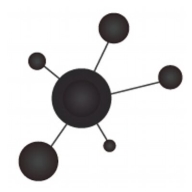

Icinga and Azure Bastion serve distinct purposes with Icinga focusing on network monitoring and Azure Bastion on secure remote access. Azure Bastion tends to have an upper hand due to its advanced security features, crucial for organizations prioritizing security.
Features: Icinga provides in-depth network analytics, extensive plugin support, and adaptability across various systems. Azure Bastion offers secure remote access, eliminates the need for public IPs, and enhances security for remote tasks.
Room for Improvement: Icinga could improve by simplifying its manual installation process, enhancing real-time data visualization, and offering more streamlined customer support options. Azure Bastion might benefit from broader customization features, reducing dependency on the Azure environment, and potentially lowering its pricing tiers for better accessibility.
Ease of Deployment and Customer Service: Icinga is suitable for those seeking a self-hosted deployment with customization options, though it involves manual installation. Azure Bastion's integration within the Azure ecosystem allows for easy, straightforward deployment, benefiting from Microsoft's comprehensive support services.
Pricing and ROI: Icinga's open-source model allows for lower entry costs with potential expenses for enterprise support. Azure Bastion participates in Microsoft's pricing tiers, which can be expensive initially, but it offers strong security benefits, fitting for businesses focusing on compliance and secure access.
| Product | Market Share (%) |
|---|---|
| Icinga | 2.8% |
| Azure Bastion | 0.2% |
| Other | 97.0% |


| Company Size | Count |
|---|---|
| Small Business | 5 |
| Midsize Enterprise | 1 |
| Large Enterprise | 6 |
| Company Size | Count |
|---|---|
| Small Business | 9 |
| Midsize Enterprise | 4 |
| Large Enterprise | 7 |
Azure Bastion is a service you deploy that lets you connect to a virtual machine using your browser and the Azure portal. The Azure Bastion service is a fully platform-managed PaaS service that you provision inside your virtual network. It provides secure and seamless RDP/SSH connectivity to your virtual machines directly from the Azure portal over TLS. When you connect via Azure Bastion, your virtual machines do not need a public IP address, agent, or special client software.
Icinga is a robust tool for monitoring IT infrastructure, known for its distributed monitoring capabilities and seamless integration with multiple platforms. It efficiently observes servers, network devices, and environments like Linux and Windows, enabling proactive issue identification and resource management.
With a focus on task delegation and clustering, Icinga offers an intuitive interface through its GUI and Icinga Director, simplifying configuration. The extensive plugin library supports diverse technologies, while the API allows automation with tools like Terraform and Ansible. Despite its strengths, users report challenges with data display in the GUI, a need for improved dashboards, and complex configuration processes. Users benefit from its SNMP alerts, email notifications, and automated incident handling, making it essential for managed service environments and enterprises.
What are the key features of Icinga?Icinga is widely adopted in IT environments for monitoring servers, networks, and applications across industries such as finance, healthcare, and technology. Its ability to integrate with various operating systems and automation platforms makes it a versatile choice for industries prioritizing comprehensive surveillance and proactive management of their infrastructure.
We monitor all Network Monitoring Software reviews to prevent fraudulent reviews and keep review quality high. We do not post reviews by company employees or direct competitors. We validate each review for authenticity via cross-reference with LinkedIn, and personal follow-up with the reviewer when necessary.